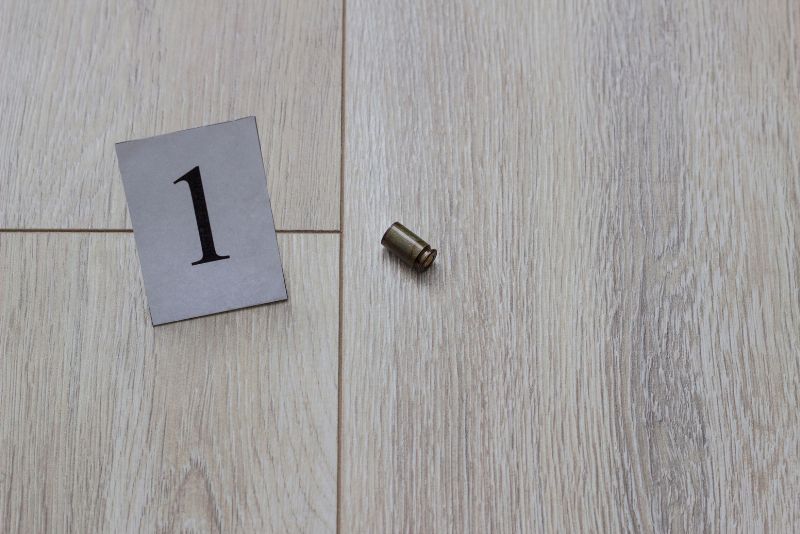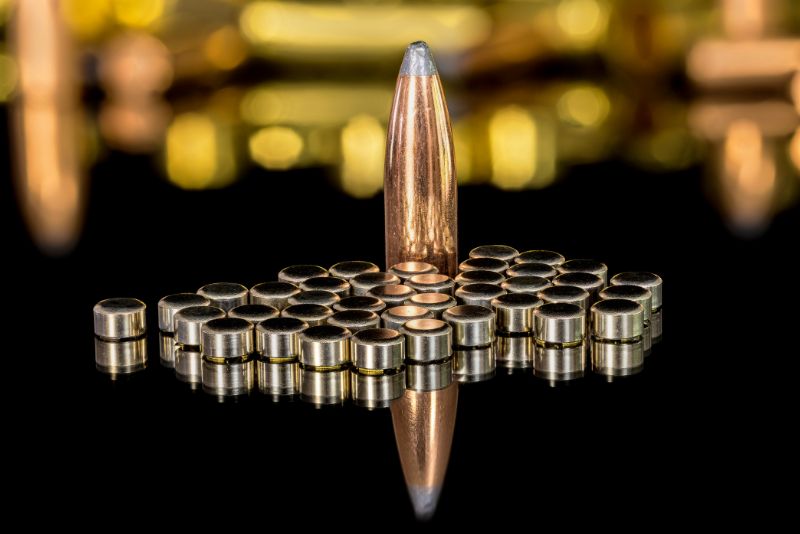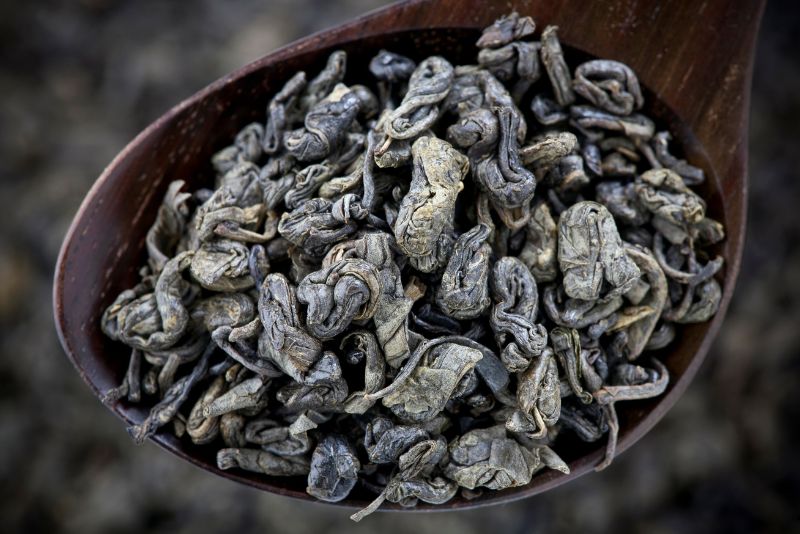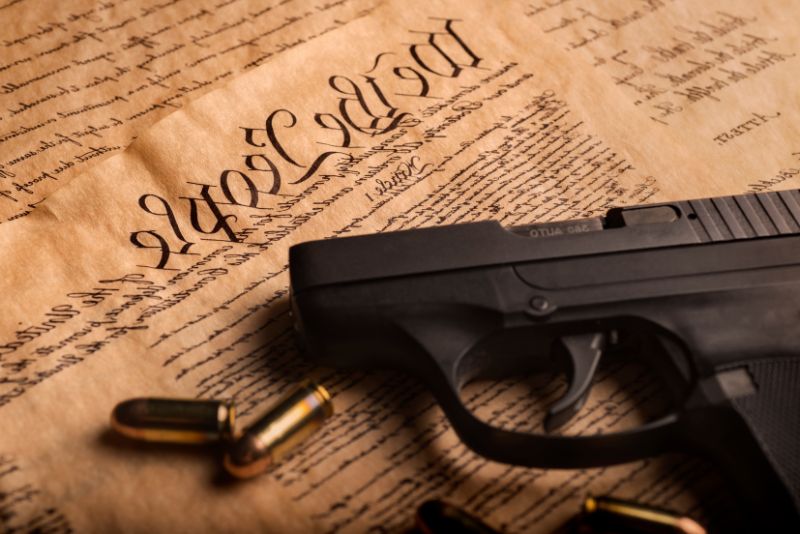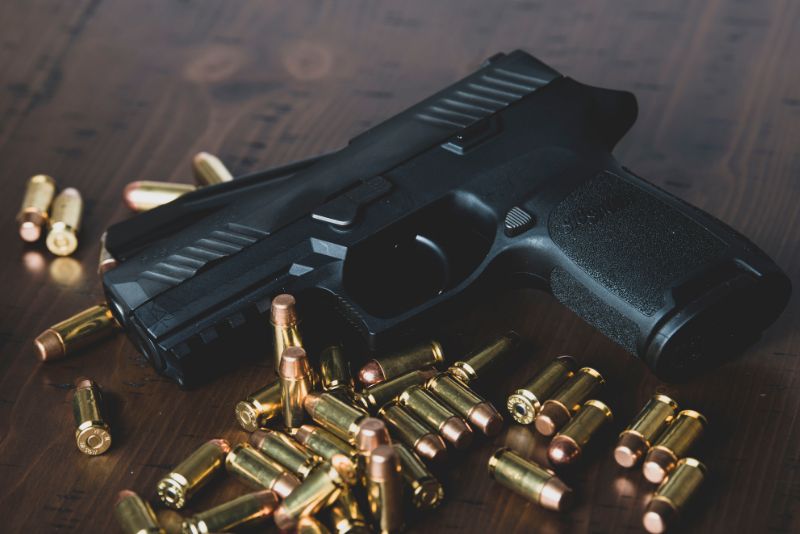Ammunition is a critical component of firearms, providing the means to project force at a distance. It is a complex integration of materials and design, each part playing a specific role in its function. Understanding the basic parts of ammunition is essential for anyone interested in firearms, whether for sport, defense, or education.
Cartridge Case
The cartridge case, often referred to as the “brass,” is the container that holds all the other components of a round of ammunition together. It is typically made from brass, but can also be made from steel, aluminum, or even plastic for certain applications.
Influence on Firing
When a firearm’s trigger is pulled, the firing pin strikes the primer, igniting the propellant. The cartridge case expands to seal the chamber, ensuring that gases are directed forward to propel the bullet out of the barrel. After firing, the case is often ejected from the firearm, making room for the next round to be chambered.
How it Can Affect Reloading?
For enthusiasts who reload their ammunition, the cartridge case is a reusable element. Its durability allows it to be reloaded with a new primer, propellant, and projectile multiple times, offering cost savings and the ability to customize loads for specific purposes.
Primer
The primer is a small, but vital, component of ammunition. Located at the center of the base of a cartridge case (centerfire ammunition) or distributed around the rim (rimfire ammunition), the primer contains a small amount of impact-sensitive chemical compound.
The Trigger
When struck by the firing pin, the primer detonates and ignites the propellant within the cartridge case. This small explosion is the catalyst for the main event, which is the burning of the propellant that ultimately propels the bullet forward.
Propellant
The propellant, historically known as gunpowder, is the chemical mixture that burns rapidly when ignited by the primer. Modern ammunition uses smokeless powder, which produces less smoke and residue than the black powder used in older ammunition.
The Conversion from Chemical to Mechanical Energy
Upon ignition, the propellant converts from a solid or gel state into a rapidly expanding gas. This expansion creates high pressure within the cartridge case, which then forces the bullet down the barrel and towards the target.
Projectile
The projectile, or bullet, is the component that is expelled from the barrel to engage the target. Bullets come in a variety of shapes, sizes, and materials, each designed for specific tasks, such as hunting, target shooting, or self-defense.
What Factors Can Affect the Performance?
The design of a bullet can affect its aerodynamics, stability, and terminal performance. For example, a full metal jacket (FMJ) bullet may be ideal for target practice, while a hollow-point is designed to expand upon impact for more effective energy transfer in hunting or self-defense situations.
Each Component is Essential
Together, these components form a complete unit of ammunition, with each part playing a crucial role in the function and performance of a firearm. From the sturdy cartridge case to the precise primer, the energetic propellant, and the dynamic projectile, the synergy of these parts allows for the effective use of firearms in various disciplines. Bullet points for quick reference:
- Cartridge Case: Holds all components; made of brass, steel, aluminum, or plastic.
- Primer: Ignites the propellant; located at the base (centerfire) or rim (rimfire).
- Propellant: Provides the energy; modern rounds use smokeless powder.
- Projectile: Engages the target; varies in design for different purposes.
The Manufacturing Process
The creation of ammunition is a precise process that involves several stages, each critical to ensuring the reliability and safety of the final product. The manufacturing process combines modern industrial techniques with strict quality control to produce ammunition that shooters can trust.
Design
Before production begins, the design of the ammunition must be finalized. This involves selecting the appropriate materials for the cartridge case, primer, propellant, and projectile, as well as determining the exact dimensions and tolerances for each component.
Adapting for Specific Purposes
Ammunition is designed with specific uses in mind, which influences its design. For instance, ammunition for military use may prioritize penetration and reliability, while rounds for competitive shooting focus on precision and consistency.
Production of Components
The cartridge case starts as a piece of metal, which is then pressed and drawn into shape through a series of dies. This process ensures the case is of the correct size and has the necessary strength to withstand the pressures of firing.
Making the Propellant
The propellant is mixed and processed to achieve the desired burn rate and energy output. It must be consistent in composition to ensure each round produces the same level of pressure and, consequently, the same ballistic performance.
Shape Of Projectiles
Bullets are typically made by pouring molten lead or another metal into molds or by pressing metal powders together. The bullets are then often jacketed with another metal, such as copper, to improve performance and reduce barrel wear.
Assembly
The primer is inserted into the base of the cartridge case. For centerfire ammunition, this is a single primer cap; for rimfire, the priming compound is spun into the rim of the case.
Loading the Propellant
The propellant is measured and loaded into the cartridge case. Precision is key here, as even small variations in the amount of propellant can affect the performance and safety of the round.
Seating the Projectile
Finally, the bullet is seated into the mouth of the cartridge case. The case may be crimped around the bullet to hold it securely in place and to provide a consistent starting pressure when the bullet is fired.
Quality Control
Throughout the manufacturing process, rounds are inspected to ensure they meet the established standards. This includes checking the dimensions, weight, and appearance of the components and the completed round.
Testing Performance
Samples of ammunition are test-fired to verify that they perform as expected. This testing checks for proper ignition, pressure levels, velocity, and accuracy. The careful manufacturing of ammunition is essential to its performance. Each step, from design to assembly, is geared towards creating a reliable and effective product. Here’s a quick summary:
- Design Phase: Determines materials and specifications for the ammunition.
- Production of Components: Involves creating the cartridge case, formulating the propellant, and shaping the projectile.
- Assembly: Combines the primer, propellant, and projectile into the cartridge case.
- Quality Control: Ensures the reliability and performance of the ammunition through rigorous testing.
Some companies are paying attention even on some visual features, with the main focus on making their ammo easily recognizable. Therefore, if you become a signature when hunting like wearing coat of arms.
What is the Most Popular Ammo?
There are some types of ammunition known for very high popularity in various fields such as military, law enforcement, hunting, and sport shooting. These popular ammunition types are produced in large quantities to meet the high demand.
| Ammunition Type | Description |
|---|---|
| 9mm Luger | A versatile cartridge used globally for military, law enforcement, and civilian purposes due to its manageable recoil and compatibility with compact firearms. |
| .223 Remington | Widely used in sports shooting and hunting, this caliber is known for its accuracy and is also the civilian equivalent of the military’s 5.56x45mm NATO round. |
| .308 Winchester | A popular choice for hunting and long-range shooting, offering excellent power and accuracy at extended distances. |
| 12 Gauge | A shotgun shell that is extremely versatile, used for hunting game birds, deer, and in competitive shooting sports, as well as for home defense. |
| .22 Long Rifle | Known for its low cost, minimal recoil, and quiet report, it’s used extensively for training, recreational shooting, and small game hunting. |
FAQs
What are parts of complete ammunition?
Complete ammunition consists of the cartridge case, primer, propellant, and the projectile or bullet.
What are the ingredients in bullets?
Bullets typically contain lead or a lead alloy core and are often jacketed with copper or another metal.
What are the most important parts of bullets?
The core and the jacket are crucial; the core for mass and the jacket for aerodynamics and barrel protection.
What ammunition is for guns?
Ammunition designed for guns includes cartridges for rifles, pistols, and shotshells for shotguns, each tailored for specific firearms.
Conclusion
The ammunition manufacturing process is a blend of engineering, material science, and precision manufacturing, resulting in a product that is integral to the function of firearms in various applications.


